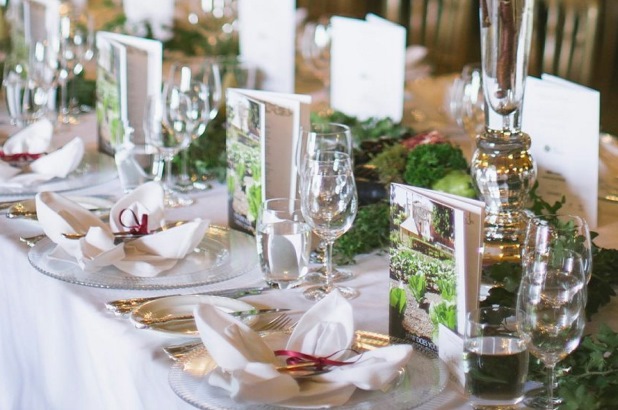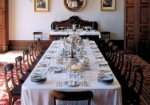In many of our recreated 19th century table settings you’ll see my favourite napkin-fold, the lotus. It may look fiendish, but its actually very straightforward. Why not give it a go?
Table art
If there are napkins for dinner, you may fold them up various ways, but let them be done neatly, so that you can put the bread in for the person conveniently; if the Crest or any other particular design is worked in the napkins, fold them so that it shall be seen.
The Footman’s Directory and Butler’s Remembrancer by Thomas Cosnett (London, printed for the author, 1823)
The careful folding of table napkins into flowers, birds, pleated fans, even into multi-sailed Sydney Opera Houses, is quite an art. When we create historic table settings we turn to period texts, such as the ‘beaten up’ copy of Mrs Beeton in the Rouse Hill House collection, or rare books held in the Caroline Simpson Library & Research Collection, for inspiration.
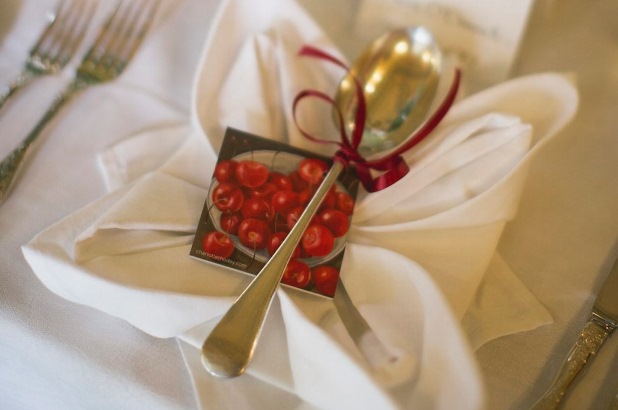
Place setting detail showing a napkin folded in a lotus form, from the 2013 Sydney Living Museums’ Governors’ Ball. Photo (c) James Horan
The table plans in The Footman’s Guide (first published 1833) for example show napkins simply folded into triangles, and placed onto each plate, as in this breakfast setting recreated at Elizabeth Farm:
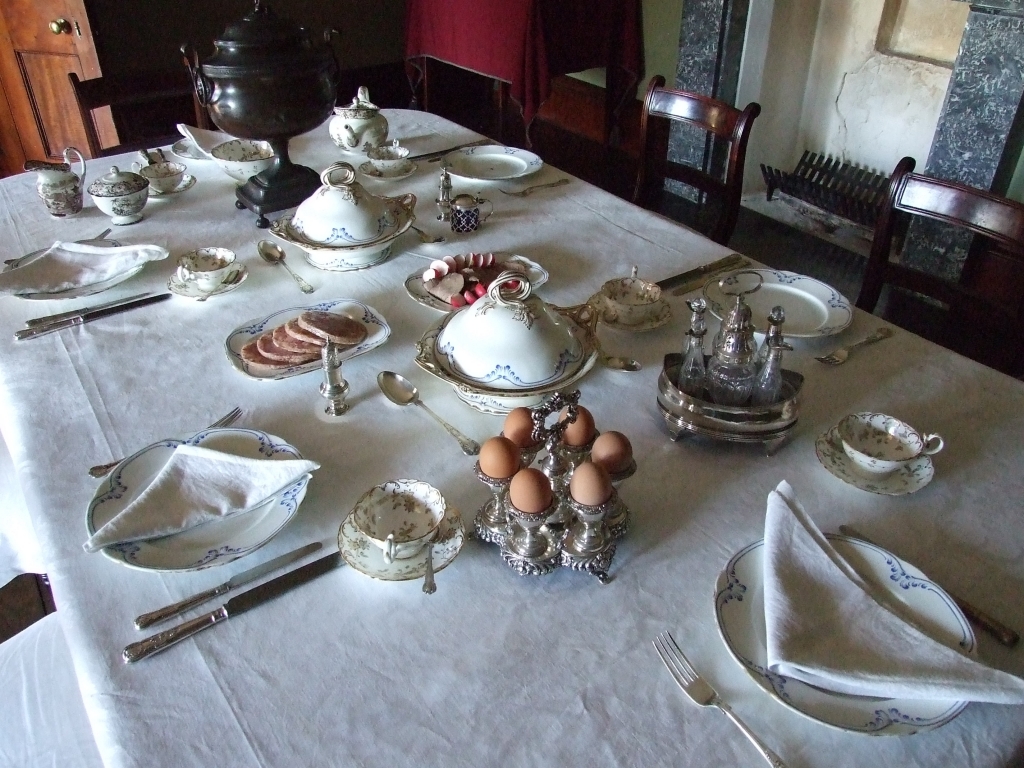
Breakfast setting recreated at Elizabeth Farm, with simply placed napkins folded into triangles. Photo (c) Scott Hill Sydney living Museums
The great age of napkin folding was the latter 19th century. By the time the 1907 edition of Mrs Beeton’s Guide to Household Management was published, with several pages of designs, styles had changed yet again and it noted that fashionable tables were now using a far simpler presentation:
The serviettes or table napkins should be neatly and tastefully folded when first put on the table. In ordinary family use they are often folded smoothly and slipped through napkin rings made of silver, ivory or bone; in fact, after the first use this is usually done, each member of the family having his own marked ring. In the following pages we give instructions and illustrations showing many ways of making these useful articles and ornaments the table, but these fancy designs are not fashionable in the household now, and the serviette should simply be folded neatly and laid flat on the plate.
And here’s the most important point:
It must however be remembered that it is useless to attempt anything but the most simple forms unless the napkins have been slightly starched and smoothly island in every case the folding must be exact or the result will be slovenly and unsightly.
This ca.1900 table setting at Rouse Hill uses a very simple fold, a fan. Being starched is essential here, or the fabric would simply flop to the side:
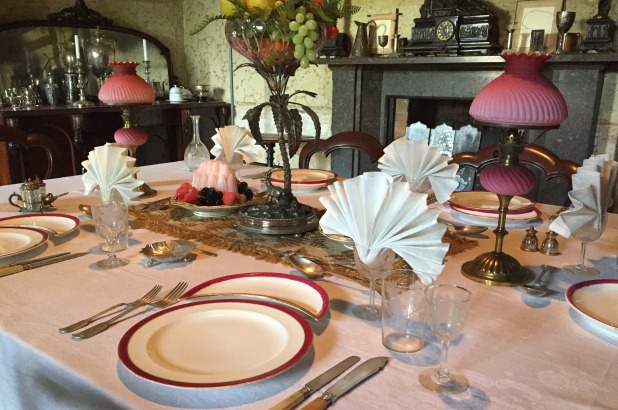
Table setting at Rouse Hill House & Farm with a folded napkin held in each wine glass. Photo (c) Scott Hill for Sydney Living Museums
The catch with cloth napkins is that the textile will inevitably distort with time. What was once a perfect, hand-edged linen square made by our Soft Furnishings Team will, with even the most careful hand washes, become slightly skew. Making a perfect fold becomes quite tricky.
The ‘lotus’ or ‘rose’ fold
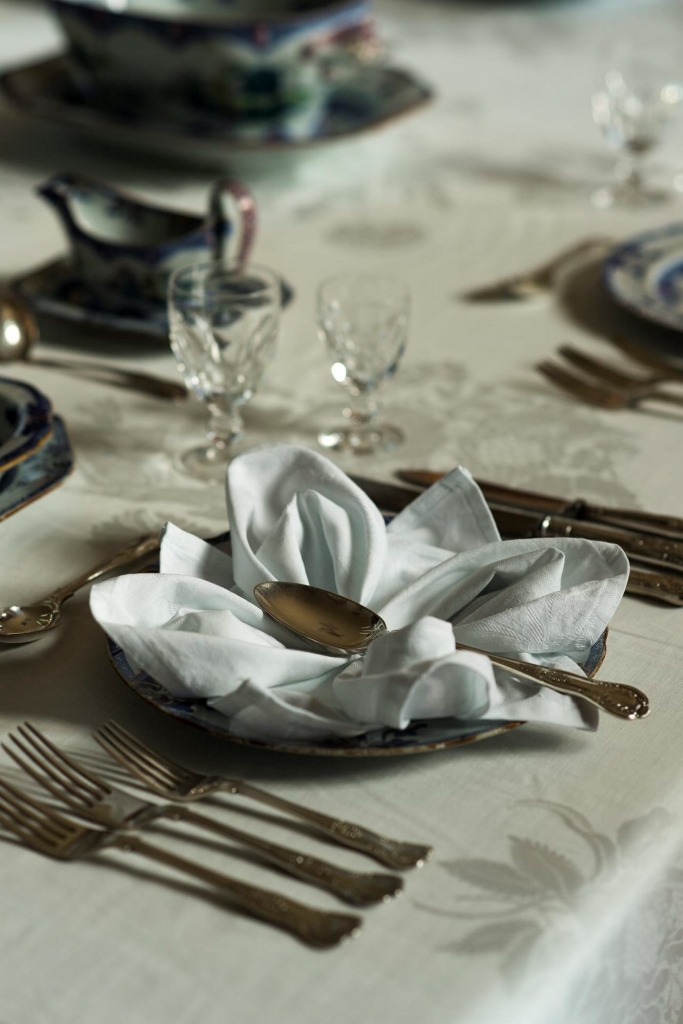
Lotus napkin fold with a tablespoon placed at centre. Detail of photograph © Nicholas Watt, for Sydney Living Museums
While it goes by several names – being neo-classically minded and having first used this at Elizabeth Bay House where it features in the architecture and furniture I prefer ‘lotus’ – this fold appears at many of our events and programs, including the Governors’ Ball fundraiser held in 2013, and pictured above. If you scroll back to posts on table settings you’ll see it pops up quite a lot!
It may look fiendish but I promise you, this fold really is quite simple! One or two goes and you’ll have it down pat. Ready?
1. Essentially what you do is fold all four corners of a square napkin into the centre. Make it as exact as you can.
2. Now repeat that, folding in the new outside corners to the centre.
3. Slide a hand under the napkin and flip it over, keeping the folds in place. (It helps if you put a hand on both sides.)
4. Fold in the outside corners again. If you have a small napkin you may now have quite a thick, small form.
5. Now, this is the only (slightly) tricky bit. But again I promise you, you’ll probably get it after just one go. Press down in the center to keep it all stable. Reach under each corner, find the point of one of your original folds, and pull it gently outwards and up. as you do this, the topmost fold will pop up slightly.
6. Repeat this so all four large ‘petals’ are pulled out. Now reach under between these, and find the smaller, inner points, and pull these out and up. They’ll only protrude partway.
These illustrations from ‘Mrs Beeton’ gives the handy tip of pressing a small glass down in the centre as you pull out the ‘petals’:
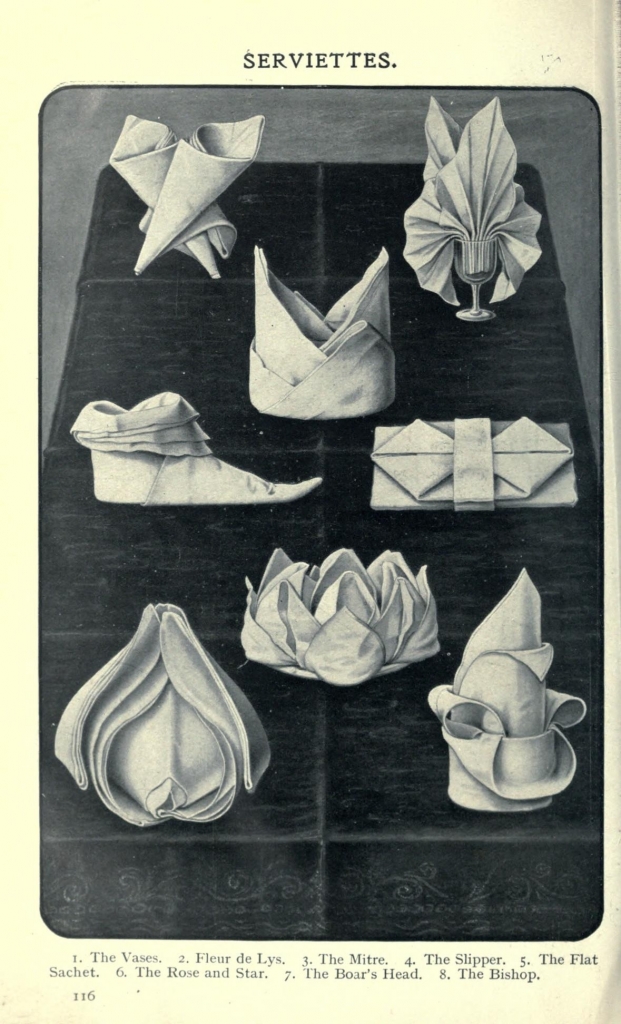
Napkin folds from Mrs Beeton Guide, the1907 edition, including a ‘lotus’ or ‘rose’ fold at centre
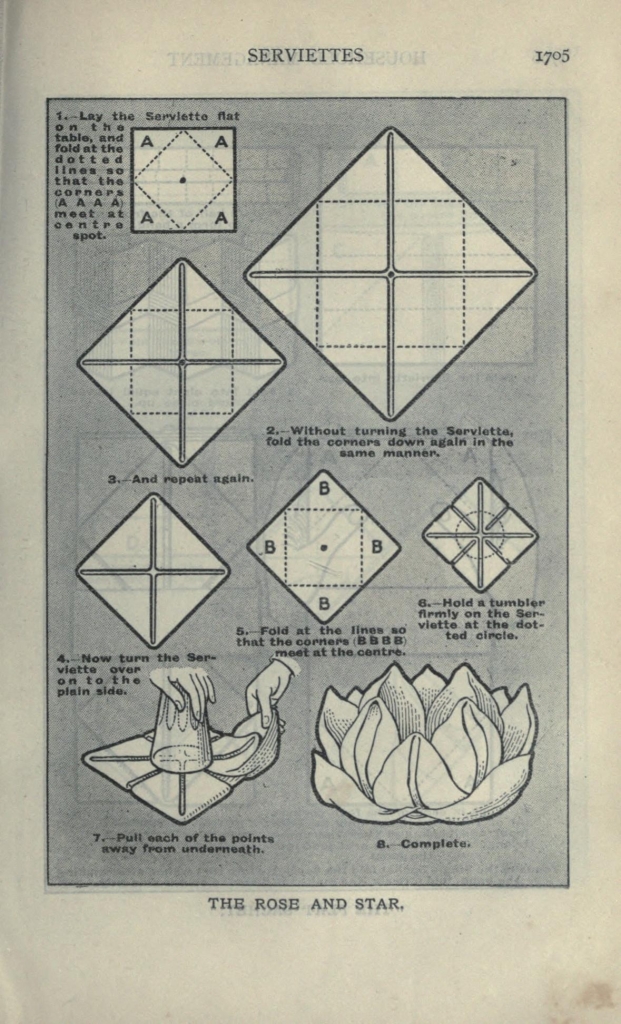
Guide for making a ‘rose’ or ‘lotus’ fold, in the 1907 edition of Mrs Beeton’s Guide to Household Management
I admit I’ve never managed to achieve petals quite as pointy as this – more starch methinks! Often you’ll see me place the head of a tablespoon in the center of a lotus fold, ready for the soup of the first course, or possibly a small dinner roll as advised by Thomas Cosnett. Mrs Beeton advised “the appearance of the dinner table may be greatly improved by putting a flower or small bouquet in napkins folded into patterns like the ‘Vase’ and the ‘Rose‘.” Ladies would then take the individual small bouquets home at the end of the evening.
Feeling confident?
The picture above showing pleated fans in the Rouse Hill setting is really seriously simple; it’s no more complex than neatly folding a piece of paper, flipping it over each time so that the folds form a concertina – everyone’s made these as a child. The far more complex version however involves pleating down each fold. What you need to do is make the initial fold, as shown at left, in the fully opened-out napkin, then do the same pleated fold from end-to-end as if you were making the simple version.
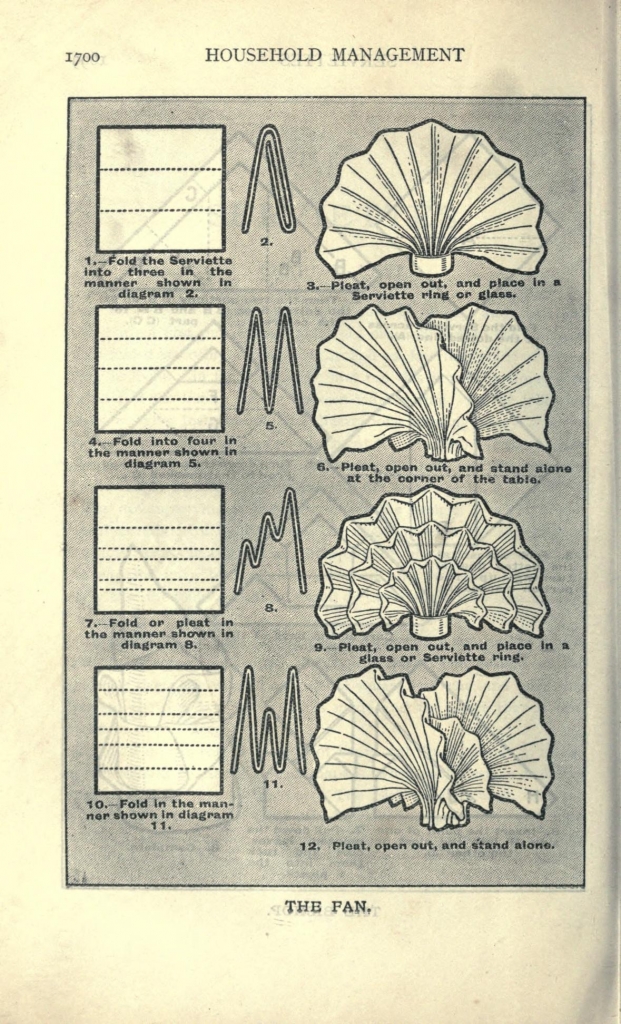
More complex pleated-fan napkin fold from Mrs Beeton’s Guide to Household Management, the 1907 edition.
I supposed it helped if you had staff… Let us know how you go!
Notes
Mrs Beeton’s Guide to Household Management, the 1907 edition (London, Ward Lock & Co.), can be found at Archive. org, here.
